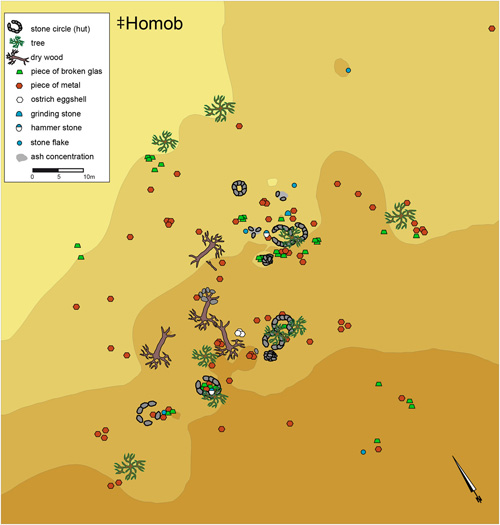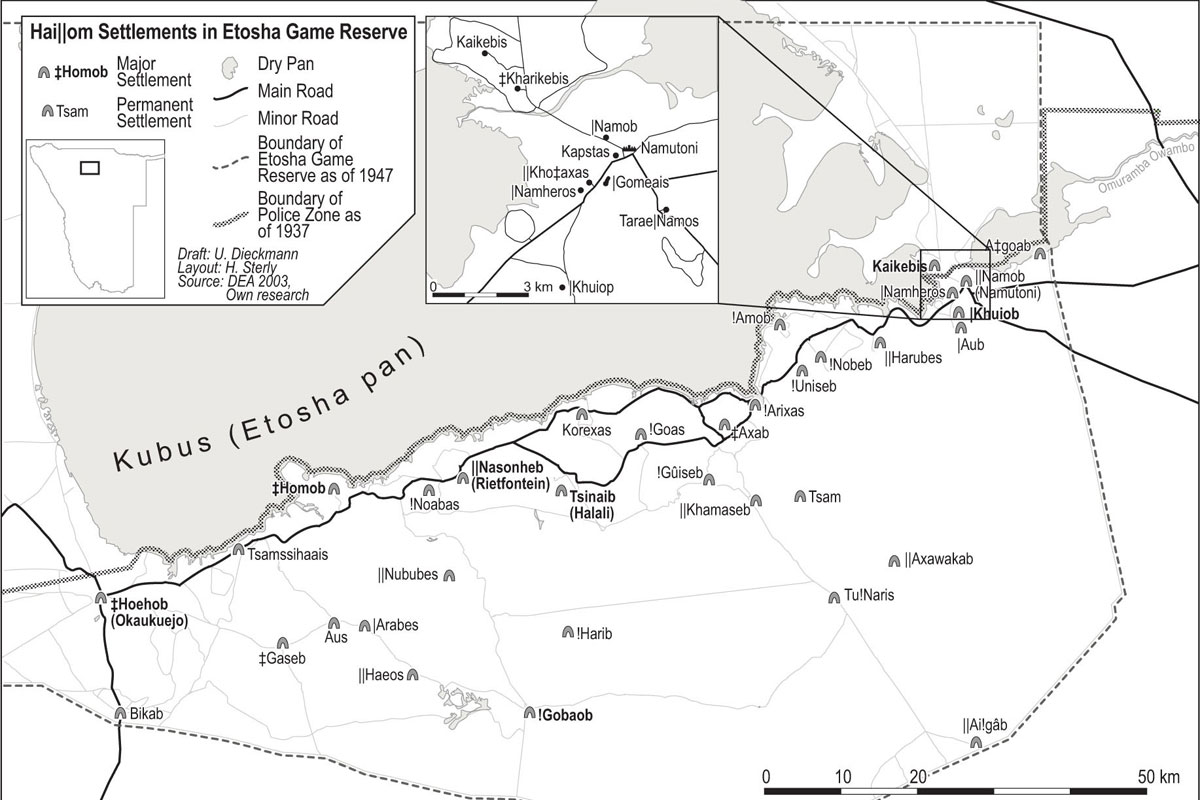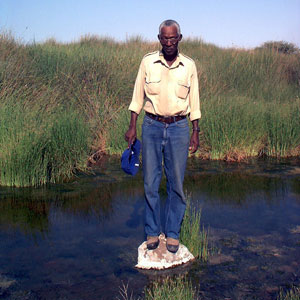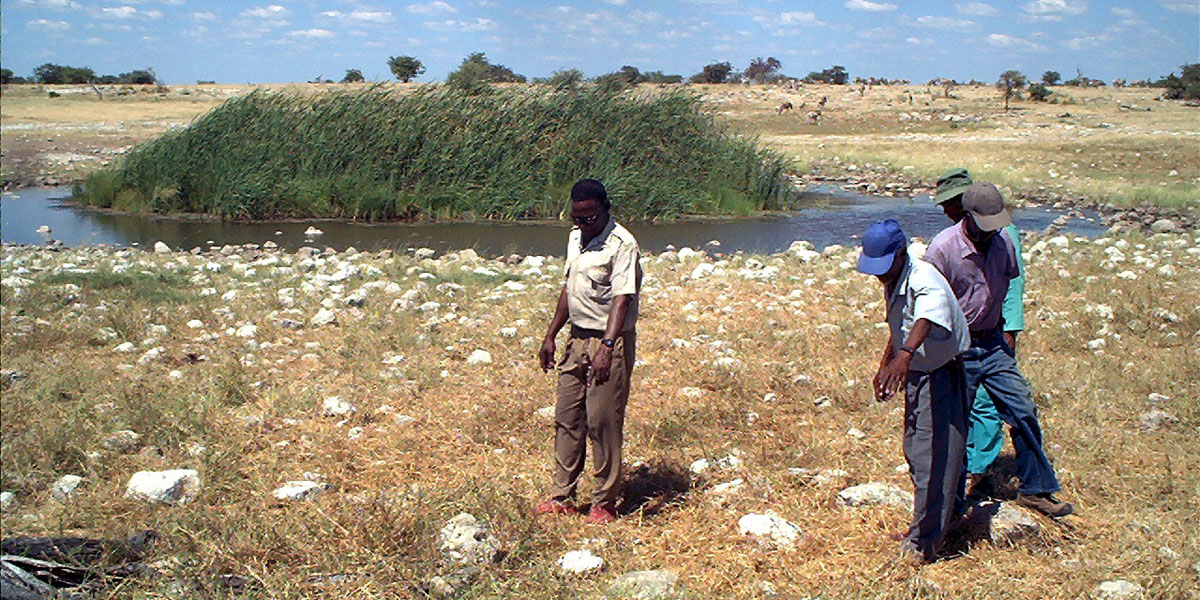Settlement patterns and social organisation
- ‡Homob -
 ‡Homob is one of the more important former Hai||om settlements. There were about 40 permanent settlements within the area subsequently defined by the 1970 park boundaries. On average, between 30 and 40 people resided at each settlement. The “headman” (kaikhoeb) of a specific area in which waterholes and other relevant natural resources, for example bush food, were found would usually stay together with close female relatives (sisters, daughters, mother) and their respective partners and children. Children in their teens always had their own huts close to their parents’ huts. However, the composition of settlements was flexible, and varied considerably.
‡Homob is one of the more important former Hai||om settlements. There were about 40 permanent settlements within the area subsequently defined by the 1970 park boundaries. On average, between 30 and 40 people resided at each settlement. The “headman” (kaikhoeb) of a specific area in which waterholes and other relevant natural resources, for example bush food, were found would usually stay together with close female relatives (sisters, daughters, mother) and their respective partners and children. Children in their teens always had their own huts close to their parents’ huts. However, the composition of settlements was flexible, and varied considerably.
Men went on seasonal hunting expeditions (!hamis, lasting up to several months) to other places; women undertook trips (!haros, lasting several days) to gather wild plants which were only available at certain places for a limited time. However, some people (usually elderly or too young to undertake the expedition) were always left behind to care for the permanent settlement. During the first decades of the 20th century prior to the eviction in the 1950s, not all of the 40 settlements were permanently occupied, however, and some had already been altogether abandoned quite some time before the eviction took place.
Important Hai||om settlements in the Etosha National Park
At ‡Homob, over the years there were two settlements, one on each side of the road. One of the waterholes situated at ‡Homob was used mainly for hunting, and the other for drinking. The waterholes were about 500 metres from the settlements.
Willem Dauxab
 Willem Dauxab was born around 1942 and lived for decades at Okaukuejo, until his death in 2008. He could still point out the remnants of the former ‡Homob dwellings and knew who stayed where. His father, Fritz Dauxab, and his wife were ‡Homob residents. Fritz’ brother Lukas also stayed there; he had the reputation of not being a particularly good hunter, but he was always willing to carry the meat from the spot where it was killed back to the settlements. Furthermore, Willem’s stepfather resided there with his mother, as did his grandmother and her partner. As is suggested by these complex family ties, serial monogamy was common practice in those days.
Willem Dauxab was born around 1942 and lived for decades at Okaukuejo, until his death in 2008. He could still point out the remnants of the former ‡Homob dwellings and knew who stayed where. His father, Fritz Dauxab, and his wife were ‡Homob residents. Fritz’ brother Lukas also stayed there; he had the reputation of not being a particularly good hunter, but he was always willing to carry the meat from the spot where it was killed back to the settlements. Furthermore, Willem’s stepfather resided there with his mother, as did his grandmother and her partner. As is suggested by these complex family ties, serial monogamy was common practice in those days.
The tree where the adult male hunters used to prepare their own meat (!hais) before handing over the rest to the women is still there, although it has subsequently been damaged by elephants. There is also another tree close to the waterhole where prior to the eviction the Hai||om used to wait during the tourist season for visitors, who took pictures of them and often rewarded them with sweets and oranges.
